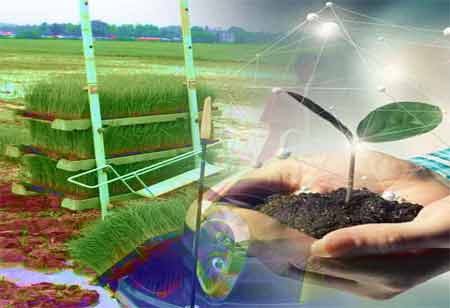Thank you for Subscribing to Agri Business Review Weekly Brief
Key Innovations Driving Efficiency in Cannabis Production
Cannabis is in demand for various purposes in various countries around the world.

By
Agri Business Review | Wednesday, May 29, 2024
Stay ahead of the industry with exclusive feature stories on the top companies, expert insights and the latest news delivered straight to your inbox. Subscribe today.
The landscape of cannabis production is being reshaped by emerging technologies, fostering innovation, enhancing productivity, and promoting environmental sustainability. This article enlists significant trends and innovations in the technologies that are used for the production of cannabis.
Fremont, CA: Cannabis is in demand for various purposes in various countries around the world. This increasing demand has pushed the need for increased production. In this digital era, technology has taken a significant role in almost all areas. One such area is cannabis production.
Some of the trends and innovations in the emerging technologies of cannabis production may include:
Controlled Environment Agriculture (CEA):
Controlled Environment Agriculture, or CEA, encompasses cannabis cultivation within a confined setting, where variables like temperature, humidity, light, and nutrient levels are meticulously controlled. This advanced technique allows growers to establish ideal growth conditions, enhancing yields and superior quality and minimizing resource usage. The methodologies used in CEA encompass indoor vertical farming, greenhouse cultivation, and hydroponic systems.
Automated Systems and Robotics:
Automation has made its mark in the cannabis industry, optimizing operations and cutting labor expenses. Implementing automated systems and robotics has revolutionized planting, irrigation, harvesting, trimming, and packaging. These advanced technologies enhance productivity, minimize the chances of human error, and guarantee consistent quality at every production stage.
Data Analytics and AI:
Data analysis and artificial intelligence (AI) are essential in cannabis cultivation. Growers utilize sophisticated software systems to gather and assess information regarding environmental factors, plant well-being, nutrient concentrations, and other relevant data points. Through AI algorithms, patterns are recognized, cultivation parameters are optimized, and yield projections are made, empowering cultivators to base their decisions on data and enhance productivity.
LED Lighting Technology:
LED lighting technology has transformed indoor cannabis cultivation by providing energy-efficient and customizable lighting solutions. Growers can now tailor light spectrums and intensity to suit various growth stages, improving plant health, cannabinoid production, and overall crop quality. This innovation not only lowers energy consumption but also enhances the cultivation process.
Extraction Methods and Equipment:
Advances in extraction techniques and machinery have revolutionized the manufacturing process of cannabis concentrates and extracts. Cutting-edge technologies like supercritical CO2 extraction, ethanol extraction, and hydrocarbon extraction allow for effective and accurate extraction of cannabinoids, terpenes, and other advantageous compounds. These progressions have paved the way for the creation of a diverse array of top-notch cannabis goods, such as oils, tinctures, and concentrates.
Blockchain and Supply Chain Management:
Blockchain technology is being adopted to improve transparency, traceability, and accountability within the cannabis supply chain. Through blockchain platforms, all parties involved can monitor the complete lifecycle of cannabis products from cultivation to distribution, guaranteeing adherence to regulations and furnishing customers with authentic details regarding the origins, quality, and potency of the products.
These are some of the trends and innovations in technology used in cannabis production. There are a few more, apart from the ones mentioned above. They may include sustainable cultivation practices, genetic research and breeding, packaging and label innovations, and delivery and consumption technologies.
New technologies are transforming the landscape of cannabis production, promoting innovation, productivity, and environmental friendliness. Controlled environment agriculture, automation, data analysis, genetic studies, and packaging improvements contribute to the transformation of every stage of cannabis cultivation, processing, and use. To remain competitive and satisfy the increasing need for top-notch cannabis products, the industry must adopt and integrate these technological advancements as it progresses.





